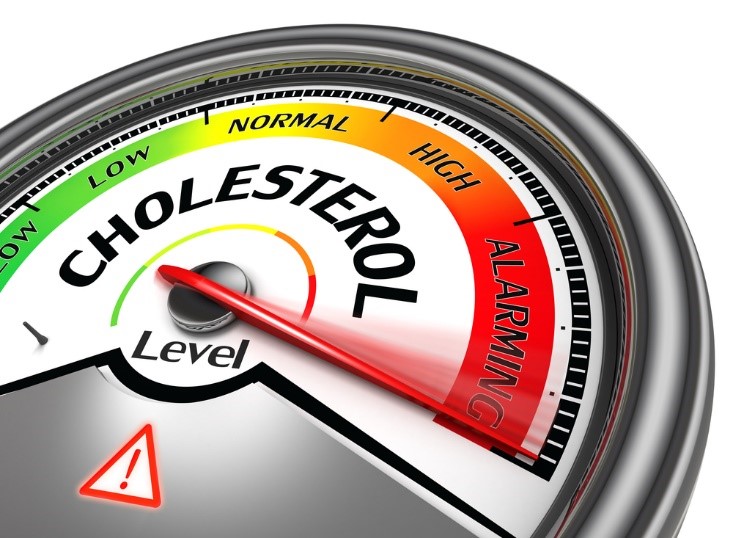How to Reduce Triglycerides Level Naturally?

Monitoring triglyceride levels is essential for a healthy heart. Triglycerides are a type of lipid in the blood, and elevated triglyceride levels are associated with an increased risk of heart disease. While they are essential for energy storage, high levels of triglycerides can contribute to atherosclerosis (the build-up of fatty deposits in the arteries) and other severe cardiovascular conditions.
What are Triglycerides?
Triglycerides are a prevalent variety of lipid (fat) in the bloodstream, constituting the body’s primary energy source. They play a crucial role in energy storage and transport.
Triglycerides are released into the bloodstream to provide the body with energy and help transport dietary fats and fat-soluble vitamins. However, high triglyceride levels can elevate the risk of heart disease and related health issues.
What are the causes of high triglyceride levels?
Here are the factors that can contribute to high triglyceride levels in the blood:
- Diet: Consuming an excess of refined carbohydrates, sugars, and alcohol can elevate triglyceride levels.
- Obesity: Obesity can lead to increased triglyceride production.
- Sedentary lifestyle: Lack of physical activity increases triglyceride levels.
- Certain Medical Conditions: Conditions like diabetes, kidney disease, and an underactive thyroid gland can also elevate triglyceride levels.
- Genetics: Some people may have a genetic predisposition to high triglycerides.
- Medications: Certain medications, such as beta-blockers, steroids, and diuretics, can cause triglyceride levels to rise.
- Smoking and Alcohol Consumption: Smoking and heavy alcohol intake can contribute to increased triglyceride levels.
What are the symptoms of high triglycerides?
High triglyceride levels in the blood do not have noticeable symptoms. This is why triglyceride levels are determined through a lab test. While high triglycerides themselves may not have symptoms, they can contribute to other health conditions that do have noticeable signs and symptoms, such as:
- Pancreatitis: Acute pancreatitis can occur in cases of very high triglyceride levels. Symptoms of pancreatitis are extreme abdominal pain, nausea, vomiting, and fever.
- Xanthomas: Extremely high triglyceride levels can sometimes lead to fatty deposits, called xanthomas, under the skin. These may appear as yellowish or reddish bumps or nodules, typically on the hands, elbows, knees, or feet.
- Eye Changes: In rare instances, triglycerides at high levels can cause lipemia retinalis, a condition in which blood vessels in the eyes undergo changes. This can cause visible differences in the appearance of blood vessels in the retina.
How are high-triglyceride levels diagnosed?
Diagnosing high triglyceride levels involves a blood test to assess the lipid profile, which includes measuring triglyceride levels alongside other lipid components such as cholesterol.
In adults, healthcare providers categorise triglyceride levels as follows:
- Mildly Elevated: Triglycerides ranging from 150 to 199 mg/dL.
- Moderately Elevated: Triglycerides within the 200–499 mg/dL range.
- Severely Elevated: Triglycerides exceeding 500 mg/dL.
A triglyceride level under 150 mg/dL is considered normal for adults. However, for individuals aged 10 to 19, a normal triglyceride reading should be below 90 mg/dL.
How to lower triglycerides naturally?
Consuming foods to avoid triglyceride levels going high is essential. Here are some ways to make lifestyle changes and choose appropriate foods to reduce triglyceride levels:
- Limit Sugar Intake
Reducing or eliminating candies, sweetened beverages, cookies, and pastries from the diet can help lower triglycerides.
- Avoid Refined Foods
Processed foods rich in carbohydrates, such as white bread, rice, and pasta, can swiftly convert to sugar in the body and elevate triglycerides. Instead, choose whole-grain alternatives like whole-wheat pasta, brown rice, whole-grain bread, and cereal.
- Increase Dietary Fiber
Fibre provides a feeling of fullness and can reduce the risk of elevated triglyceride levels. High-fibre foods benefit cardiovascular health and promote sugar absorption in the body.
- Choose Healthy Fats
Including healthy fats, particularly omega-3 fatty acids, can aid in lowering triglycerides and reducing bad cholesterol levels. While omega-3 supplements can be effective, obtaining them from natural sources such as salmon and olive oil is preferable. Limit saturated fats from meat sources to no more than 5-6% of daily calories, and restrict daily cholesterol intake to under 300 mg.
- Avoid Trans Fats
Trans fats, often labelled partially hydrogenated oil, are detrimental to heart health, elevating LDL cholesterol and triglyceride levels. These should make up less than 1% of daily calorie intake.
- Avoid Excessive Alcohol Consumption
Alcohol contains carbohydrates that can convert to triglycerides and impact liver function, hindering fat metabolism. To lower triglycerides, it is advisable to stop or limit alcohol intake.
- Engage in Regular Exercise
Exercise is essential for individuals with high triglycerides, as it enhances their ability to metabolise sugar and reduces sugar conversion into triglycerides. Add about thirty minutes of moderate physical activity five days a week.
- Maintain a Healthy Weight
Excess weight can hinder carbohydrate metabolism and lead to elevated triglycerides. Strive to achieve a healthy weight by balancing calorie intake and physical activity. A rich diet and an active lifestyle are critical defences against high triglyceride levels.
Implementing a healthy triglyceride diet and introducing regular exercise can significantly reduce the risk of heart-related complications.
To assess the overall cholesterol profile, healthcare providers analyse a combination of triglycerides, HDL (high-density lipoprotein), and LDL (low-density lipoprotein) values. If triglycerides and LDL cholesterol levels are high while HDL cholesterol is low, this combination increases the risk of heart attack and stroke. Therefore, it is crucial to maintain a balanced lipid profile to safeguard cardiovascular health.













